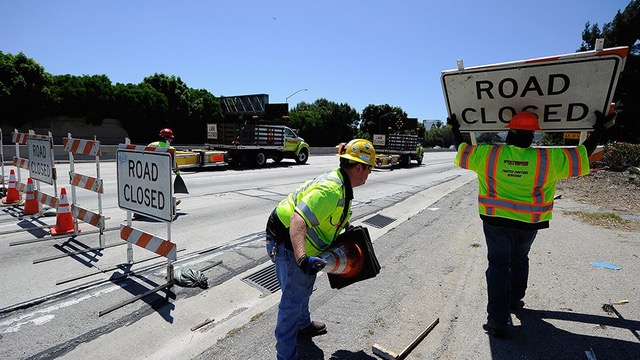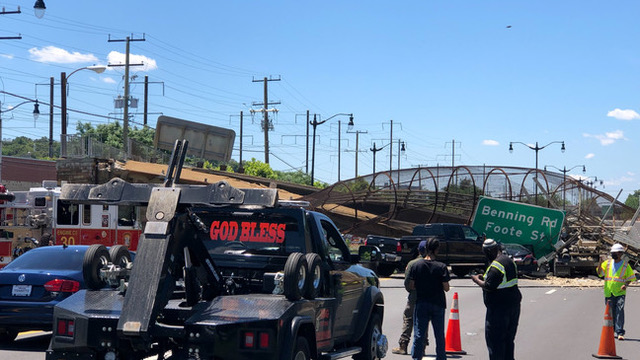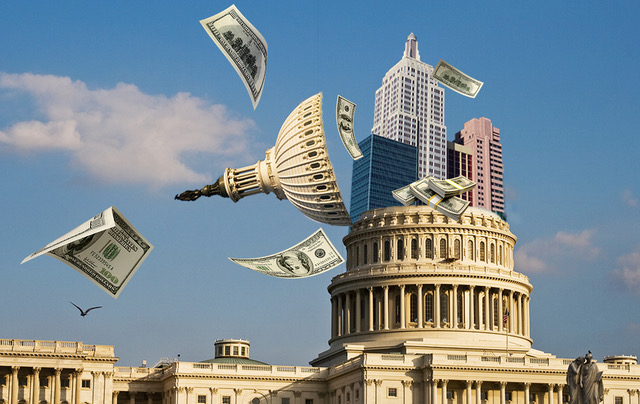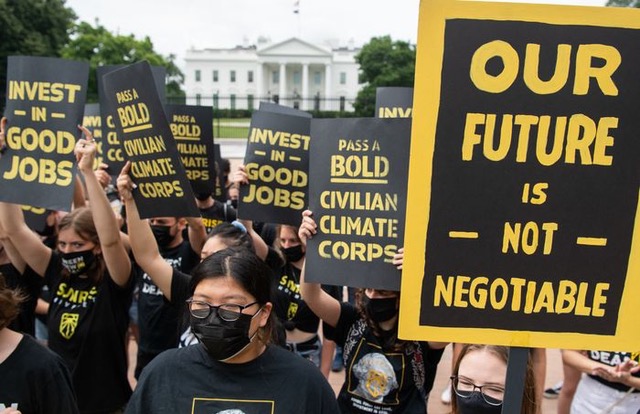
As the school bells ring and GPA (grade point average) becomes uppermost in every aspiring student’s mind, the time is right to take a reading of the U.S. GPA. As fires and droughts ravage the West and Southwest, floods drown the east coast, and perishing heat sears the Midwest and the South, the state of the U.S. infrastructure has suddenly become a hot potato among the pols in Washington.
It’s not a pretty picture. According to the American Society of Civil Engineers, in 2021 the U.S. infrastructure GPA was C-, a slight uptick from its D+ GPA four years ago. Some of the most serious deficiencies highlighted in the report include water main breaks occurring every two minutes spilling an estimated 6 billion gallons of treated water each day, lack of repair of U.S. roads resulting in 43% being in poor or mediocre condition, and eight percent of U.S. bridges, 46,000 in all, labeled “structurally deficient.”
As if that weren’t enough bad news, the U.S. National Oceanic and Atmospheric Administration (NOAA) just released their State of the Climate in 2020 report. Their conclusions were stark. “The major indicators of climate change continued to reflect trends consistent with a warming planet. Several markers such as sea level, ocean heat content, and permafrost once again broke records set just one year prior.” [Officials from NOAA’s National Centers for Environmental Information.]
How do we going about fixing this mess? The civil engineer’s report estimated that at least $2.6 trillion would be required to bring U.S. infrastructure up to liveable. President Biden was on the right track in March 2020 when he introduced a $2.3 trillion infrastructure plan. Unfortunately, that was the last bright idea he had. He proceeded to waste the next three months in what everyone but Biden knew would be a futile attempt to get Republican buy in. What he and the country eventually got was a watered-down bill coming in at $1.1 trillion (less than one-half the amount Biden had promised) that delighted major donors of both parties. Here’s the kicker — only $579 billion in new money. But Biden hailed it as though it were the second coming— “neither side got everything they wanted in this deal and that’s what it means to compromise, [it] signals to ourselves and to the world that American democracy can deliver…”
Just what did it deliver? Depends on who you ask. Climate advocates were unimpressed —“It is clear that the deal does not meet the moment on climate or justice.″ [Tiernan Sittenfeld, League of Conservation Voters]. As expected, Greenpeace wasn’t exactly over the moon — “This looks like the Exxon Infrastructure Bill. An infrastructure bill that doesn’t prevent a full-blown climate catastrophe by funding a swift transition to renewable energy would kill millions of Americans.″ [Janet Redman, Greenpeace USA]

On the other hand, conservative Republicans were popping the champagne corks — “This is roads and bridges, but also lots of other kinds of infrastructure, including broadband, our water system and our rail system — all of which is good for the economy. This will lead to more efficiency and higher productivity, more economic growth.″ [Sen. Rob Portman, R-Ohio, one of the lead negotiators of the bill and the conservative’s conservative]
Who got it right? Overall, the bill focuses spending on transportation, utilities and pollution cleanup. But the Republican-led bipartisan Senate committee slashed the budget for most of these items. Case in point: the money for public transportation was reduced from $85 billion to $39 billion over five years (or less than $8 billion) a year. As one commentator observed, New York City’s share of that meager amount will just about cover power washing subway stations but major improvements in public transportation will go unmet. Also pulled out of Biden’s original plan were two important climate innovations. One, a Clean Electricity Standard would have replaced fossil fuels with renewable energy to power the electric grid. The other was a Civilian Climate Corps that would have served a dual purpose — create millions of Americans jobs to tackle conservation projects and respond to climate disasters. Another Biden’s promise — to tackle the U.S. fossil-fuel economy by transforming it into a clean-burning one by 2035 also bit the dust. Included in the bipartisan panel’s haircutting were improvements ln the nation’s broadband dropping from the $100 billion Biden originally planned to invest to $65 billion.
Hidden among the 2,702 pages it took to spin this litany of failed promises, massive deceit and underwhelming fixes lies an even more pernicious scam — the fire sale of the nation’s vital and irreplaceable existing infrastructure.
For openers, the $1.1 trillion Biden gloats about is really only $550 billion in new money (more about that later) and $579 billion in money “stolen” from funds already allocated in other areas. One of the most heartbreaking cuts and one that the CBO (Congressional Budget Office) predicts will increase taxpayer costs by $17 billion a year or $88 billion over the life of the infrastructure plan is $70 billion originally meant to fund a new Medicare rule that would have given beneficiaries drug rebates that now go to corporate heavyweights including insurance companies and PBMs (pharmacy benefit managers), aka middlemen. The rest comes from money allocated each year for minimal maintenance of highways and other infrastructure.

One senator who shares President Biden’s unmitigated glee over the infrastructure bill is none other than the democrats’ old nemesis Mitch McConnell, Republican Senate minority leader. With a bipartisan bunch of conservative Rs and Ds writing the bill, what’s not to like from a Republican point of view. In this quintessentially Republican bill, rich campaign donors need have no fear that they will be asked to take on their fair share of paying for it. Likewise, financial parasites like the big banks, hedge funds, and private equity asset managers are free to continue looting the economy with no fear of consequences.
The bulk of the new financing comes through the old trick bag of “public-private partnerships” and a new name for an old scam, “asset recycling.” To be clear, both mechanisms involve some form of privatization where large chunks of U.S. infrastructure, bridges, toll roads, electric grids and waterways, are sold off to billionaire financiers, aka the lords of capital. In the process, local, state, and federal governments lose control of these assets, surrender a huge chunk of their revenues, and the public faces increasingly rising costs to use the assets. Asset recycling is privatization with a slightly different MO. Here “old” assets” are sold off usually for pennies on the dollar to finance “new assets.” Let the folks at Food & Water Watch give you the skinny on both corporate giveaways— “Communities across the country have been ripped off by public-private schemes that enrich corporations and Wall Street investors. It is nothing more than an outrageously expensive way to borrow funds, with the ultimate bill paid back by households and local businesses in the form of higher rates.”

There you have it. The essence of Biden’s infrastructure bill, not in 2,207 pages, but in 1000 words. A swarmy concatenation of half-measures that will not fix America’s crumbling infrastructure and in the bargain “diverts” half a trillion dollars from other programs meant to stave off collapse in a decaying empire. When it comes to the pittance in new money, the old con game the oligarchs perform so flawlessly rears its ugly head —transfer ownership of the country’s public works, paid for by taxpayers, to the control of private companies while America’s once-proud infrastructure crumbles and the American people as always pay the bill and suffer the consequences.
432 total views, 1 views today
